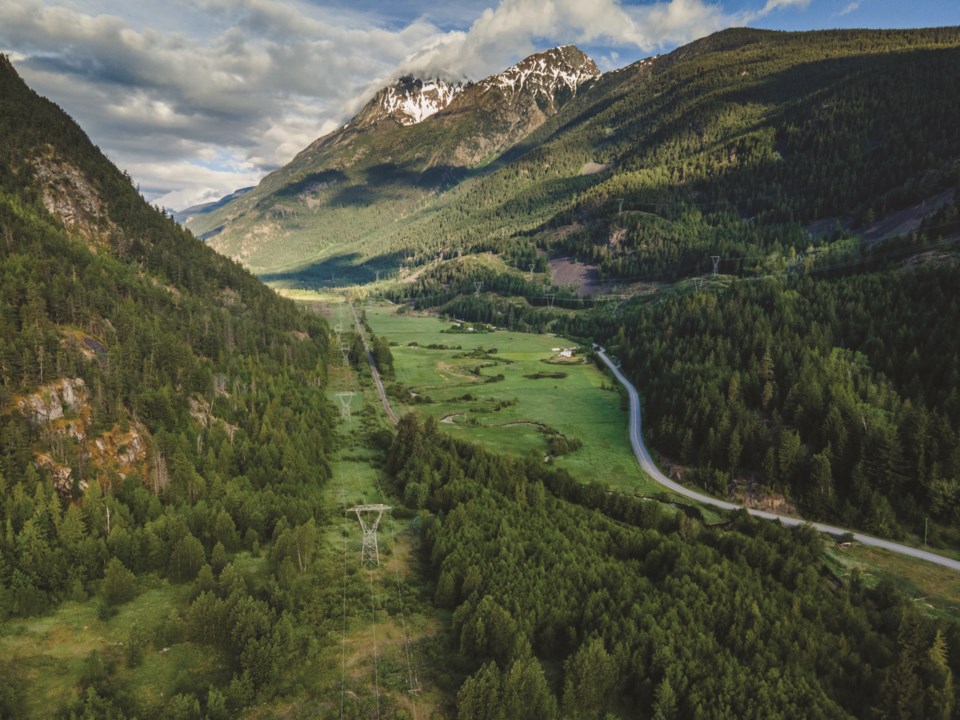The Nature Conservancy of Canada (NCC) now owns 111 hectares of forest and wetlands near Gates Creek.
Five years ago, the Fish and Wildlife Compensation Program—a partnership between BC Hydro, the province of B.C., Fisheries and Oceans Canada, First Nations and public stakeholders that aims to conserve and enhance watersheds impacted by BC Hydro dams (which owned the land)—began the process of transferring it to NCC for long-term conservation.
Earlier this week, the national not-for-profit announced ownership of the property, located about five kilometres southwest of Anderson Lake, had officially been transferred.
“We’ll be managing the land for ecological purposes to conserve and look for opportunities for restoration,” said Steven Godfrey, West Coast program director with NCC. “And also we’ll be working with the N’Quatqua to see if they have any cultural interest here. We’d like to accommodate any traditional uses.”
While the area isn’t particularly desirable for recreation, public access will be determined as part of the management plan for the area, expected to be completed in the next year.
“It’s not necessarily somewhere someone would like to go for a hike,” Godfrey said. “It serves a purpose for habitat for coho, sockeye, and grizzly bears. The land will be left to restore naturally and we’ll look for opportunities to facilitate that with restoration projects.”
As part of the process to determine if the land was a good fit for its work, the NCC worked with Coast to Cascades Grizzly Bear Initiative, the Pemberton Wildlife Association, and Conserve Northwest.
Grizzly bear biologists identified the property as a location that bear populations from the South Chilcotin could meet with those from the Stein Nahatlach.
“For this [land] specifically, part of the [appeal] was the grizzly bear conservation strategy and looking to identify the least-crossed paths,” Godfrey said. “There’s opportunity for genetic mixing for grizzly bear populations at risk in the area.”
On top of that, NCC identified the area as suitable habitat for 14 species at risk, including the olive-sided flycatcher, monarch butterflies, the western toad, and wolverine.
The property is on a low floodplain and fed by an underground aquifer. As a result, the wetland and streamside areas also provide a home for other “rare and important” plants, amphibians, birds, and mammals.
“I’ve spent a little bit of time up there and there’s definitely some good habitat for all kinds of species,” Godfrey said.
While the FWCP transferred the property to the NCC, it also contributed to an endowment fund to ensure long-term stewardship of the area. The Government of Canada, through the Natural Heritage Conservation Program, Canada’s Nature Fund, the U.S. Fish and Wildlife Services and TELUS Communications also provided funding.
“Funding land securement is one of our most effective tools to conserve and enhance fish and wildlife,” said Todd Manning, FWCP Coastal Region board chair, in a release. “In the case of Gates Creek, conservation of this rare and valuable habitat has long been a priority as we work towards having thriving fish and wildlife populations in watersheds that are functioning and sustainable.”
This isn’t the first piece of land NCC has secured in the area. Last fall, it also took ownership of a parcel of land down Pemberton Meadows Road along the Ryan River (about 20 minutes from downtown Pemberton). “There is public access there if people are interested, but it also serves as important bear habitat,” Godfrey said. “It’s not somewhere necessarily that enjoyable for recreational hiking, but birders, or someone willing to put some effort in can check it out.”
For more, visit natureconservancy.ca.




